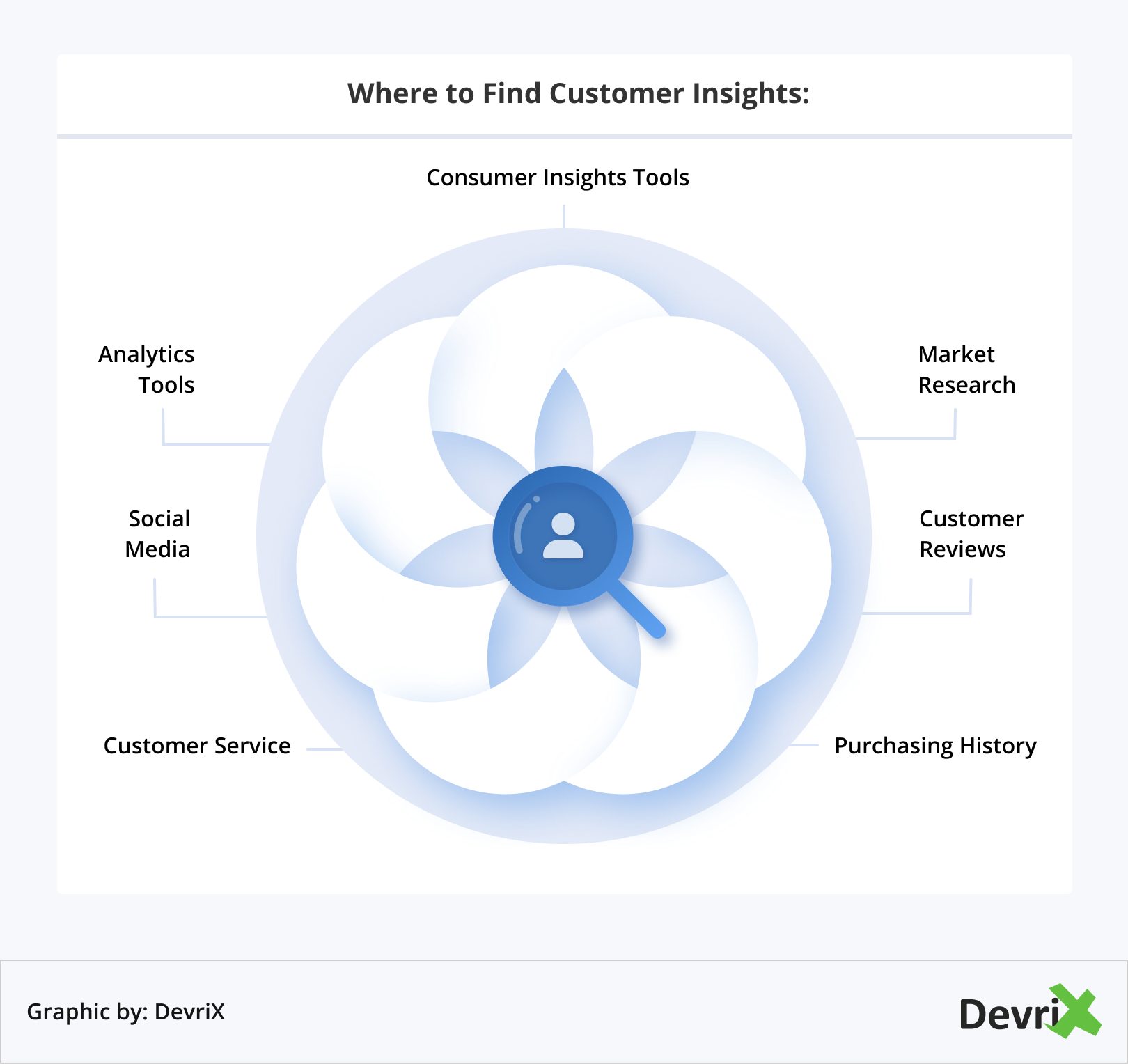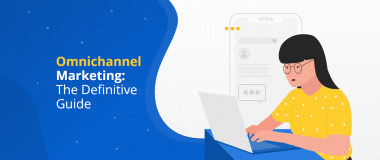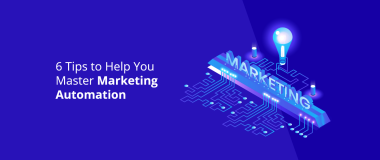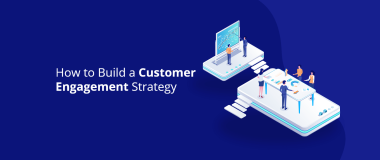One of the most commonly used buzzwords in the marketing of late has been customer insights. And there is a reason why. Consumers nowadays want a personalized experience and are more than willing to switch to a new brand to find it. In a marketplace crowded with vendors ready to deliver anything a B2C or a B2B client desires, people will choose the company that shows empathy towards their needs and goes the extra mile to provide a superb UX.
This forces businesses to start caring about their clients more as human beings and less as sales or marketing numbers. Gathering customer insights is fundamental to understanding the consumer and their unique perspective of the marketplace and its brands.
What Are Customer Insights?
Customer insights, also known as consumer insights, are revelations about a customer’s behavior, preferences, and needs, that businesses uncover by observing and listening to what people have to say. Companies go out of their way to look for this information in order to better understand their target audience and improve their ability to personalize sales and marketing strategies, improve products and give people what they want.
What makes customer insights so valuable for businesses, is that they deliver unexpected information that companies are unable to find out without taking into account the consumer’s authentic point of view. They can be related to the way people feel, what they need and want, their day-to-day, personal purchasing habits, and the ways brands and products are positioned in their life.
The goal of gathering consumer insights is to provide actionable solutions to specific company objectives like increasing sales, improving usability, adding new features and developing new products, understanding people’s attitude towards a brand, etc.
By building empathy for their customers, companies can better interpret their behavior and understand what makes them tick. This allows them to bring the Brand / Customer Relationship to a new level and design a mutually beneficial experience.
Difference Between Market Research and Customer Insights
Although consumer insights and market research are closely connected, there are important differences.
Market research is a broad discipline that focuses on gathering and analyzing data from consumers that businesses can use for different purposes like competitor analysis, product pricing, consumer insights, brand positioning, and so on.
Customer insights often come up when conducting market research is done but are not limited to research methods alone. They are a multidisciplinary subject that can be found in data gathered from different sources.
In market research, the data is a source of knowledge and the starting point from which a number of paths can be taken. Consumer insights, on the other hand, are the narrative and the story behind the customer that makes sense of the data. They can show you how the knowledge you have can be used to make actionable decisions and provide solutions to business problems.
Where to Find Customer Insights?
Nowadays, it’s much easier to find consumer insights than it used to be. There’s no need to go door to door to meet people or go through every single name in the YellowPages.
The tools we use in our everyday marketing tasks deliver loads of data riddled with clues about people’s actions and habits. We also have almost unlimited access to communication channels that give us a glimpse of people’s online life, and offline hopes and dreams. Combined with a keen understanding of human nature, these sources can show us what customers really want.
All you have to do to gather customer insights is ask, listen, and observe.

Market Research
As we have already established, market research and customer insights are different things, but they are still connected. Analyzing research results can give you valuable information about what your customers have to say, how they feel, and what they want.
Qualitative methods such as focus groups and interviews allow you to speak face to face with people and understand the reasons behind their behavior and what really drives their purchasing decisions and consumer choices. Although self-reported behavior is not always reliable enough to make conclusions, combined with observation of how people act and interact with products, it can deliver an in-depth understanding of the customer.
In addition, quantitative methods like surveys and questionnaires give you the tools to confirm what you’ve learned at scale. Therefore, they can give you actionable ideas on how to implement these insights into your strategies.
Customer Reviews
Reviews can deliver valuable information about the way customers use products, what they like and dislike about them.
It is not uncommon for people to put a whole story in the review, including the circumstances around their experience with the brand and the exact actions that led to their positive or negative experience. Analyzing this data and extracting value from it can provide priceless first-hand information about how your customers feel at different stages of their journey, what issues they have encountered, and what solutions you can offer.
Purchasing History
Although purchasing history alone is not sufficient to deliver conclusive customer insights, it can be used to monitor people’s purchasing habits and discover patterns. When cross-referenced with data from different sources, it can clearly outline a customer’s behavior and explain their actions.
For example, by learning a client’s pattern when they make shopping decisions, you can deliver timely and on-point upselling and cross-selling suggestions.
Or, if someone was a regular shopper but suddenly stopped doing business with you, a negative review from a different platform could tell you what happened and give you the tools to make amends.
Customer Service
Customer service is the goldmine of consumer insights. Your support team is your first line of communication with clients who encounter issues with your products. This puts them in a unique position to know exactly what bothers people, and how obstacles in their interaction with your brand reflect on your clients’ work and personal life.
Similar to reviews, people share with customer service reps excessive amounts of personal information about the circumstances in which they have used the products and exactly when, how, and why something went wrong. Leveraging this information, you can collect invaluable information that can help you to improve your products, add new features, up your marketing game, and gather unconventional ideas from whatever else comes up in the conversation.
Social Media
Your audience’s preferred social networks are a great place to look for customer insights about how they feel about you and your product. There you can also find information about what they say about the competition, what they generally want in their work or personal life, etc.
Monitoring social media platforms can be done via social listening software or by simply being present and keeping an eye on the conversation.
What’s more, online discussions are the cheapest and most accessible way to stay connected to your audience, ask them questions and learn their opinions on pertinent topics.
Analytics Tools
Analytics tools can show you how long people spend on your website or app, what they do when they are there, where they click, where they terminate their session and leave, and so on.
Similar to purchasing history, this information can’t give you enough to draw conclusions upon but it can show you where to look for issues. Combined with data from other sources it can be very useful in discovering weak points in the customer journey and even bugs on your website or app.
Consumer Insights Tools
Specialized consumer insights tools will help you organize and go through data much faster. They are particularly useful to businesses that don’t have a team of experts on board or can’t spare the extra people needed to manually handle all the information garnered from communication channels.
The software can be integrated with existing tools you have and, depending on its functionalities, can deliver summarized reports with information from different sources.
How to Use Customer Insights
Collecting customer information and probing deeply into the personality and motivations of the people they do business with, lends a strategic advantage to companies when positioning their products in the marketplace. After all, what businesses want is to produce something that the customer will buy, and what the customer wants is to be able to purchase products that will solve their issues, help them overcome obstacles, and improve their overall quality of life.
This makes gathering customer insights a mutually beneficial endeavor that delivers to both sides exactly what they want.
With that being said, let’s focus on how to use the insights you’ve gathered.

Customer insights derived from direct customer communication and some of the observational methods can be straightforward and easy to understand and implement into practical solutions. However, when cross-referencing data from analytical tools with other sources, it can be complicated to notice the associations between touchpoints and consumer emotions. Companies can work with psychologists and human behavior experts to help them work out the connections and turn data into comprehensible insights.
If they don’t have access to such professionals or can’t afford their services, the data can be analyzed by a team of representatives from different departments within the company. The group should include people involved in the sales and marketing processes who have a good understanding of the customer journey and the product.
The first step on any team’s agenda should be to build customer journey maps, position the data, and build the customer’s story.
Create Customer Journey Maps (CJM)
Customer insights can be used to build CJMs of the customer’s 1. current state, 2. their personal life, and 3. their future. The first and the second types focus on analyzing the present situation of the client and how it can be improved, and the third one outlines the business goals the company has for their relationship.
By visualizing the information and positioning the consumer insights accordingly, it’s easier to imagine the journey of a person from lead to paying client, and see it as a narrative:
- Who the customer really is.
- What obstacles do they face.
- What they want to achieve.
- How they interact with the company.
- What emotions do they feel while interacting with the company.
- What they do at different stages of their day.
Positioning the customer insights on the timeline and providing context to the customer’s actions, can bring about obvious (and not so obvious) solutions that the company could have otherwise missed or misinterpreted. Combined with the empathy the customer journey map elicits as a tool, it can deliver the “aha” moment businesses need to make the right business decisions.
Build Personalized Marketing Campaigns
Using your knowledge of who the customer is, what they want, and how your business can help them, allows you to deliver the best kind of personalized experience.
People want to be understood and if your marketing message is relatable and your product is what they need, they will feel a connection to your brand.
Personalizing your marketing can be as simple as monitoring how often a client buys your products and sending them thoughtful reminders when this time approaches. Or making data-backed upselling suggestions according to the way they use their current products. Moreover, you could create an ad that speaks to them and that they identify with.
However you choose to approach it, personalization can be a powerful tool to build loyalty in your customers, improve the connection between you, and boost your business performance.
Improve Existing Products
The customer’s opinion is your best indicator of how useful your products are and what can make them even better.
You can ask your clients directly or observe how they use your products. This will allow you to understand how to provide a better experience and improve satisfaction with your brand.
Consumer insights can give you ideas for new features and functions, how to improve usability, and even new markets you can target that you didn’t know could benefit from the products.
Launch New Products
When developing new products, taking into account consumer insights can improve your success rates and help you build a solution that will answer your audience’s needs.
Testing prototypes with a target group will enable you to resolve issues before the product hits the market. It can also give you a general idea of how potential customers feel about what you’re developing. This will provide valuable information you can include in the marketing campaign.
Also, you can even keep recordings of people testing the prototype and use their natural reactions (hopefully, good ones) as a selling point when the product goes live.
Do A/B Tests
The goal of gathering consumer insights is to give you actionable ideas. However, even data-driven decisions are not bullet-proof and should be proven in a real environment.
There’s always a possibility that you could misinterpret what your customers have in mind or miscalculate the scale of it.
Doing A/B testing and comparing results will allow you to confirm the efficiency of the changes you’ve made and double-check strategies.
Also, it can provide additional customer insight and put theory into practice.
Bottom Line
Investing the time and effort into gathering and analyzing customer insights will allow you to gain a deeper understanding of your target audience and put a face to the people behind the numbers.
By learning about what your customers want and need, and what their obstacles to achieving it are, your products can be the solution to their problems. Gathering insights enables you to build a better relationship with your audience, improve your services, and, ultimately, grow your business by attaining happier, more content clients.





